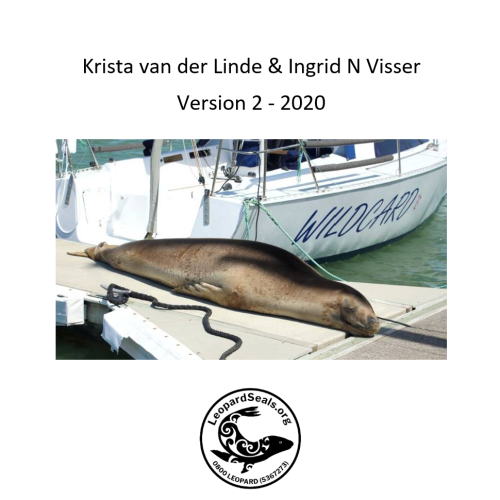Leopard seal management plan
Leopard seals were formally known as a ‘Vagrant’ species in New Zealand (Hupman et al. 2020). However, after sightings were collected and collated by LeopardSeals.org, analysis showed that the species was found in all regions of NZ and year-round (Hupman et al. 2020). At that point, DOC reclassified this species as a ‘Resident’ species (Baker et al. 2019).
Considering leopard seals are widespread around NZ, they often come into contact with humans and domestic animals which may cause wildlife-human conflict. Such conflicts may include leopard seals approaching out of curiosity or a desire for them to haul out to rest. Additionally, there may be damage to property, as has been documented when dinghy’s have been punctured and fenders have been removed. Such conflicts have led to negative perceptions of leopard seals by some humans.
Conversely, human-wildlife conflict occurs where leopard seals are at risk from humans and domestic animals. Such conflicts may include humans making threats of physical harm, close encounters resulting in disturbance and/or harassment and physical harm (including beating and shooting leopard seals). In addition, harassment by dogs has also been documented. Despite the threats/harm posed to leopard seals, our records reflect that their behaviour has not changed towards humans or domestic animals.
Co-existence with leopard seals around New Zealand will require all stakeholders to actively participate in effective management. The Leopard Seal Management Plan (LSMP) has been developed to enable Leopardseals.org (LS.org), the Department of Conservation (DOC), Iwi, and various community stakeholders (including boat clubs/marinas) to:
1. Categorise leopard seal behaviours to enable better management of this species in New Zealand.
2. Establish and define pre-emptive management strategies (and actions) to help stakeholders minimise incidents and avoid emergency situations from developing between humans and leopard seals.
3. Establish and define reactive management actions for events involving leopard seals in New Zealand, thereby providing a coordinated response from all of the stakeholders.
4. Outline intervention activities which can be used for leopard seal disruptions.
5. Provide contact details for all stakeholders to enable effective and efficient communication between organisations in response to leopard seal management in New Zealand.

